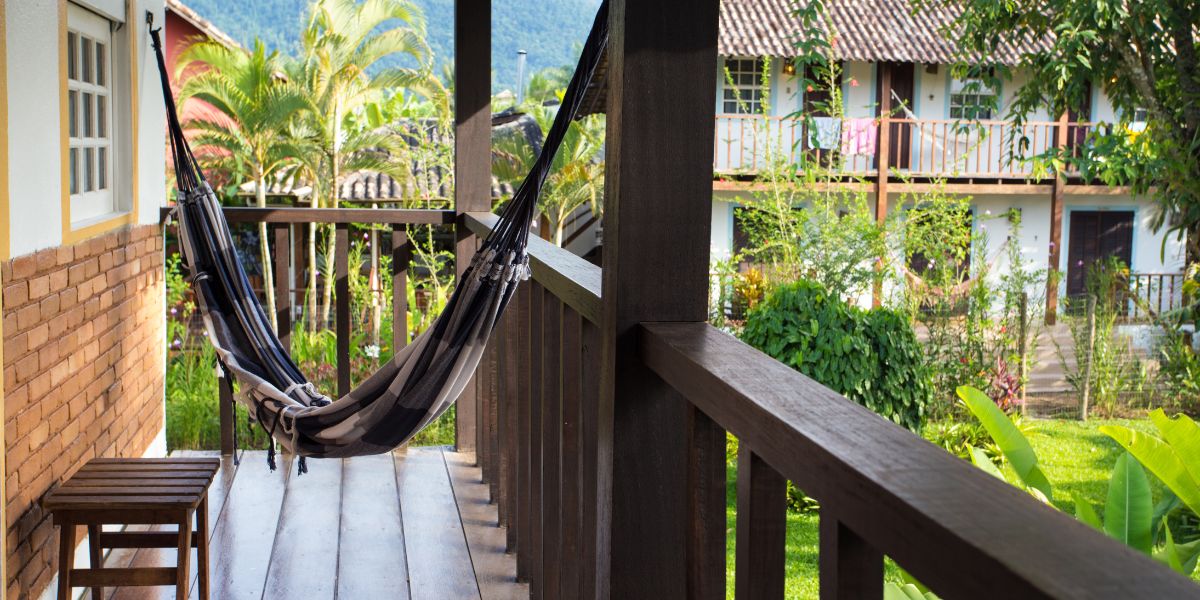
Before you relax in that hammock on your balcony, there are crucial steps you must take to ensure your safety and comfort. From choosing the right hammock to evaluating your balcony's structure, each detail matters. With proper installation techniques and additional safety measures in place, you can elevate your balcony experience. But, what happens if one key element is overlooked?
Hammock Selection
When selecting a hammock for your balcony, consider the weight capacity and size that will best suit your needs. It's crucial to ensure that the hammock you choose can safely support the intended users. Look for hammocks with weight capacities that exceed the combined weight of those who'll be using it. This extra margin of safety can prevent accidents and ensure a relaxing experience.
In addition to weight capacity, think about the size of the hammock. Balconies come in different shapes and sizes, so measure the available space carefully. A hammock that's too large might overwhelm a small balcony, while one that's too small can be uncomfortable for taller individuals. Consider both the dimensions of the hammock when unfurled and how it will fit within your balcony space.
Balcony Assessment
Assess your balcony's structural integrity before installing a hammock for safety. Start by checking the balcony's weight-bearing capacity, ensuring it can support the weight of the hammock, and the maximum weight capacity as well. Look for any signs of rust, corrosion, or damage to the balcony railing, as these could compromise its strength. Inspect the flooring to confirm it can handle the pressure points where the hammock will be attached.
Additionally, evaluate the attachment points on the balcony where you plan to hang the hammock. Ensure they're securely anchored and can withstand the weight and movement of the hammock without causing damage to the balcony structure. Consider consulting with a professional to assess the balcony's suitability if you have any doubts about its safety.
Proper Installation
To ensure safe usage, carefully follow proper installation guidelines when setting up your hammock on the balcony. Start by selecting sturdy anchor points that can support your weight and the stress of the hammock. Check the balcony structure for any signs of damage or weakness before proceeding. Use strong, high-quality hooks or straps to attach the hammock to the anchor points securely. Make sure the hammock is hung at an appropriate height to prevent accidents and ensure comfort while in use.
When installing the hammock, ensure that it's properly centered and balanced to avoid tipping over. Adjust the tension of the hammock to achieve a comfortable sag without it hanging too low. Regularly inspect the installation for any signs of wear and tear, and make necessary adjustments or replacements as needed. Follow the manufacturer's instructions for installation to guarantee safe usage of your hammock on the balcony. By paying attention to these installation guidelines, you can enjoy a relaxing time on your hammock without any safety concerns.
Safety Precautions
Ensure your hammock is equipped with safety straps and harnesses for added security while enjoying your relaxation time on the balcony. These straps should be securely attached to strong anchor points to prevent accidents. When setting up your hammock, double-check that all connections are tight and properly secured. Regularly inspect the straps and harnesses for any signs of wear and tear, replacing them if necessary to maintain safety.
Always follow the weight limit recommendations for your hammock to avoid overloading it, which could lead to dangerous situations. Make sure the balcony railing or structure can support the weight of the hammock and the person using it. Position the hammock at a safe height above the ground to prevent injuries in case of a fall.
Additionally, be mindful of the weather conditions before using your hammock on the balcony. Avoid using it during strong winds, storms, or extreme weather that could compromise its stability. By taking these safety precautions, you can enjoy a relaxing hammock experience without worrying about potential risks.




